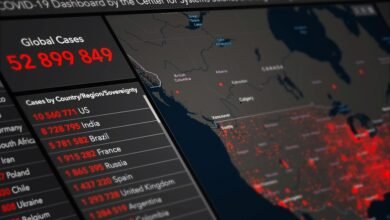Track Suspicious Numbers Global Access 3343758875 3348950705 3899450917 3472607329 3484226372 3510700594

The rise of suspicious global access numbers, such as 3343758875 and 3899450917, necessitates a meticulous examination of their patterns and behaviors. Analyzing these numbers can uncover potential scams and fraudulent activities. By documenting unusual interactions, authorities can initiate investigations. This proactive approach is vital for safeguarding personal information and communication security. Understanding how these numbers operate may reveal deeper insights into the tactics employed by scammers. What implications might this have for individuals and organizations alike?
Overview of Global Access Numbers
As global communication networks evolve, the proliferation of global access numbers has become a critical component in facilitating international connectivity.
These numbers enable seamless international dialing, allowing users to connect across borders with ease. Their implementation enhances accessibility, promoting economic collaboration and cultural exchange, thereby empowering individuals and businesses alike to communicate freely.
This reinforces the fundamental principles of global connectivity in an increasingly interconnected world.
Analysis of Suspicious Phone Numbers
Analyzing suspicious phone numbers involves examining patterns that may indicate fraudulent activity or potential scams.
Investigators often trace number origins, identifying unusual geographical distributions or repetitions that suggest automated dialing systems.
Additionally, the correlation between specific number ranges and reported scams aids in recognizing suspicious patterns.
This analysis is crucial for individuals seeking to maintain autonomy in their communications and avoid deception.
Identifying Potential Scams and Frauds
How can individuals effectively distinguish between legitimate communications and potential scams?
Effective scam detection involves scrutinizing caller IDs, analyzing the language used, and recognizing unusual requests for personal information.
Fraud prevention strategies include verifying the source of communications and seeking third-party confirmations.
Awareness of common tactics employed by scammers empowers individuals to protect themselves, fostering a sense of autonomy in their decision-making processes.
Best Practices for Protecting Your Information
Implementing robust strategies for protecting personal information is essential in an increasingly digital world.
Key practices include utilizing data encryption to safeguard sensitive information from unauthorized access and regularly updating privacy settings on all devices and accounts.
Additionally, individuals should remain vigilant about sharing personal details online, as these measures collectively enhance security and promote a culture of privacy in the digital landscape.
Conclusion
In the digital age, where communication can resemble a modern-day Trojan horse, vigilance against suspicious global access numbers is paramount. The analysis of numbers such as 3343758875 and 3472607329 reveals patterns that may signal deceptive schemes lurking beneath the surface. By employing best practices to safeguard personal information, individuals can fortify their defenses against these potential threats. Ultimately, awareness and proactive measures serve as the keystone in the ongoing battle against fraud and deception in our interconnected world.





